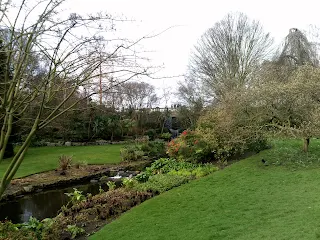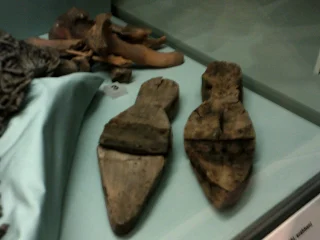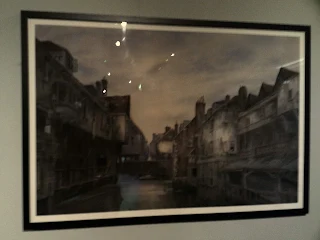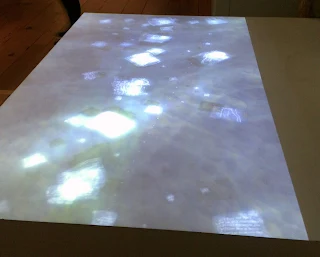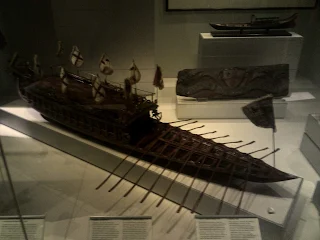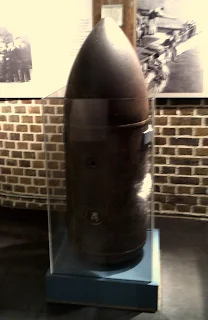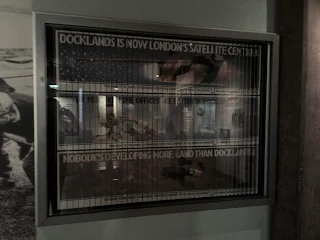The only way it was possible to enter the Pet Cemetery section of Hyde Park was via one of their Hidden Stories of Hyde Park tours, so I duly paid my tenner and signed up (months in advance- these tours sell out rapidly, and are good value for money.)
The tour takes in other landmarks, but we were told that it only touches on what Hyde Park is about. Other, more in-depth tours are available, depending on your specific interests.
We started at Speakers' Corner, where open air debate and discussion are allowed. It is close to the site of Tyburn (near Marble Arch) where the infamous three-cornered gallows, which could hold 21 condemned souls, once stood- although nobody knows its precise location. The first recorded execution at the site took place in 1196, and the last hangings in the area in 1783.
We also saw the site of Winter Wonderland, which is a good earner for the park- although it was a muddy mess on this day, as it's been dismantled. Events have taken place on that exact patch of ground since Elizabeth I's time.
The park was originally established by Henry VIII, in 1536, when he took land from Westminster Abbey and used it as a hunting ground.
The tour takes in other landmarks, but we were told that it only touches on what Hyde Park is about. Other, more in-depth tours are available, depending on your specific interests.
We started at Speakers' Corner, where open air debate and discussion are allowed. It is close to the site of Tyburn (near Marble Arch) where the infamous three-cornered gallows, which could hold 21 condemned souls, once stood- although nobody knows its precise location. The first recorded execution at the site took place in 1196, and the last hangings in the area in 1783.
We also saw the site of Winter Wonderland, which is a good earner for the park- although it was a muddy mess on this day, as it's been dismantled. Events have taken place on that exact patch of ground since Elizabeth I's time.
The park was originally established by Henry VIII, in 1536, when he took land from Westminster Abbey and used it as a hunting ground.
This mosaic was unveiled in 2000 by politician Tony Benn, and sits at the site of the Reformers' Tree, an oak tree which, in 1866, became the focus of protests by the Reform League, who were a group campaigning for all adult men to be given the vote.
The Holocaust Memorial was constructed in 1983. The largest boulder is inscribed thus:
"For these I weep. Streams of tears flow from my eyes because of the destruction of my people."
This text is from the Book of Lamentations.
The area opposite is called the Dell...
It is entirely created, and contains many plants or trees not native to Britain...
...As well as snowdrops. We saw some early daffodils, too...
It takes in overflow from the Serpentine...
It is a very elegant area, which I was unaware of. My tour guide asked me if I was familiar with Hyde Park. I explained that I had been lost inside it- it is vast, at 142 hectares (350 acres)- twice before, whilst taking a "short cut" home from Marble Arch, when I lived in Hammersmith!
Silver birches are extremely common in the park...
Squirrels were hiding up here...
Closer... But they still look quite camouflaged...
The Queen Caroline Memorial was unveiled by our current Queen in 1990. Caroline was the wife of George II and, from 1726-1730 created the Serpentine (lake), which had been a series of six natural ponds.
The changeable weather made for moody skies, but you can see herons perched in these adjoining trees...
Close-up of the herons...
I managed to get a shot of the Bandstand through the trees. It is one of the oldest in Britain and was built in 1869, and moved from Kensington Gardens to Hyde Park in 1886.
Majestic swans pattering around the Serpentine.
These beautiful creatures (they were actually quite big!) mate for life. A lovely, romantic thought, considering it was Valentine's Day when I partook of my tour.💕
There once stood a refreshment building known as the Cheesecake House, in the area where the boathouse now is. This would have been during Georgian times, but what they called cheesecake was nothing like the Americanised version we know nowadays. Custard tarts would bear the closest resemblance. The cafe would also have served syllabubs and other fancies. Bear in mind that during those days only gentry would have been allowed into the park- riff-raff were not welcome! At one time there would also have been a building for laying out the dead, as people tended to wash in the lake, but were hampered by the fact that, in those days, most people couldn't swim- so drownings were not uncommon. Nice!
The bridge behind here defines the boundary between Hyde Park and Kensington Gardens.
Bird Island. More herons nest here...
This is not a detailed close-up, and seems to depict only blobs, but this is where these birds mate and gestate...
Some cottages, like this one, are occupied by Hyde Park staff...
The River Westbourne has now been forced underground, and you can see (and hear) it from this grate. Not so long ago, we went to a Secret Rivers exhibition at the Museum of London Docklands. Read all about it on a previous blog post:-
http://elainerockett.blogspot.com/search?q=docklands+museum
The rock in the background is the Norwegian War Memorial, presented by their navy and merchant fleet in 1978 as thanks to the British for their support during World War II.
The tree in the foreground is called the London Plane. It is hardy and suitable for polluted cities, as rain cleans its shiny leaves and it naturally sheds its dirty bark. It's a species formed by hybridisation, and was thought to have been created in Spain.

A ringneck cockatiel was making a lot of noise in this tree...

...They are not native to Britain, but have been introduced from South America and co-exist quite happily with native species in the park. He was making so much noise because I think he thought he was going to get fed!
Rangers Lodge...
Peering over the fence of Rangers Lodge, to get a photo which included the lake...
This diseased tree has been cut down...
Deadwood abounds in this wilder section of the park...
It is kept there as it offers a natural habitat which encourages both animals and plants to thrive.
In the background is a drinking fountain and a cattle trough. Animals- including sheep, cows, pigs and geese- were once allowed to be driven across the park, on their way to market/ slaughter.
The fellow in the foreground is just a playful chappie after a game of ball!😀
The owl boxes encourage them to nest. Bats, which live off insects and are currently in hibernation, as is their cycle, live in the park too. Hyde Park offers a bat walk at certain times of the year!
And now, we got to enter the highlight of the day; the Pet Cemetery. I have blogged about it before, after having a peep through the railings. I will apologise in advance, as some of the information on here today will match that of my former blog. Read all about that day here, as I include other things, such as Cafe Diana and venereal disease information in the nearby public toilets (yes, really...) :-
https://elainerockett.blogspot.com/2019/07/miss-elaineous-peeps-into-pet-cemetery.html
The Pet Cemetery sits behind Victoria Gate Lodge, and was opened in 1881. Mr Winbridge was the gatekeeper and he began burying dogs in the garden, starting with a Maltese Terrier called Cherry, who died of old age. Cherry's owners were friends of the gatekeeper, and used to visit the park frequently, so they thought it was a fitting tribute to bury her right here.
I don't recall seeing Cherry's grave.
The second dog to be interred here was Prince, who was owned by Sarah Fairbrother, an actress who called herself Louisa and who was married (illegally) to HRH Prince George of Cambridge. Prince's grave has no dates on it, but it is known that he was killed under the wheels of a carriage; trampled to death by horses. This fate was common for dogs in Victorian times.
This is an just an evocative shot of this corner of the graveyard.
From then on a trend was started, and the cemetery became the place for the fashionable members of society who lived near the park to bury their much-loved pets. Mr Winbridge carried out the interments (usually alone, as the owners were often too distressed to attend), placing the deceased animals in canvas bags, which he then sewed up, before burying them.
It is certainly a lovely experience, walking amongst these Lilliputian graves.
George Orwell called this cemetery 'perhaps the most horrible spectacle in London'. Perhaps he was referring to the fact that, in times of often extreme poverty, these animals led comparatively unbelievably pampered lives.
There weren't many allowed in our tour group- definitely less than fifteen people, so if you have a mind to do this tour, book it as soon as you see it advertised.
Some of the animals had 'human' names- such as Maudie, Peter, Paul and Dick, and some pet names; such as Tippo, Butcha, Moussoo and Chips. I encountered more than one Gyp, so it was obviously popular during late Victorian times.

A cat named Ginger Blyth. The "King of Pussies" is not a moniker which translates well nowadays!😆
Ba-Ba sounds more like a name for a sheep, but most of the animals in the cemetery are cats or dogs. There are several birds here, and at least one monkey, but nothing of an ovine nature....
Tiger is quite a nice name, but Smut? And Phisto? It doesn't sound good and I hope it's nothing to do with the poor animal getting fisted! We also have a Titsy in this section (*sighs*).
Cupid at the back. Very apt, as it was (as I mentioned before) Valentine's Day!💓
Dolly- another one of the cuter names...
Here we have Scum. Why, oh why, did his "parents" have to call him that?
Robin was obviously special, as he gets a big grave, but why on earth would anyone call their pet Drag? Was he a cross-dressing dog?! Perhaps I'm missing something vital and it's one of those names that hasn't translated well into modern times. Maybe he simply was unwieldy and dragged himself around.
My good God, how times have changed- here's another one which doesn't translate well. You wouldn't get away with naming your dog the N word nowadays. It's quite shocking to us modern people...
Prince (more than one of these, too, and it's still a common dog's name) gets a big grave, but he's not the Royal prince...
Maybe spare a thought for Balu (son of Fritz) who was 'Poisoned by a cruel Swiss' in 1899. Yes, his human parents may have been wealthy Victorians, but his epitaph (on this leaning grave) suggests a less than pleasant ending.🐾🐾
Mr Winbridge gave over much of his garden and by the time the cemetery closed, in 1903, 300 animals were buried here.
I would definitely visit again, and will certainly research other Royal Parks tours. Until then...
TTFN
The Miss Elaineous
XXXXXXXXXXXX
XXX
X
X





